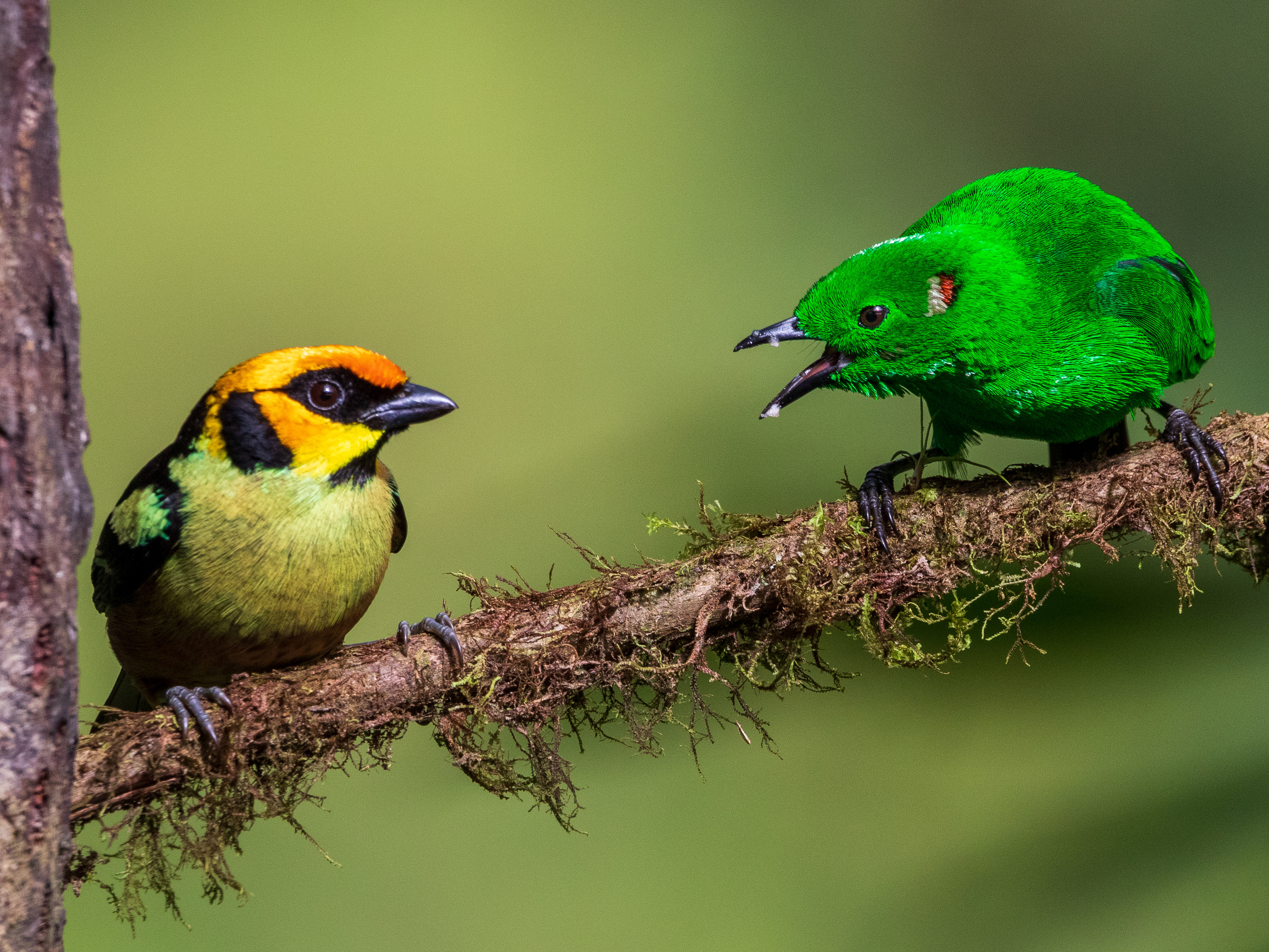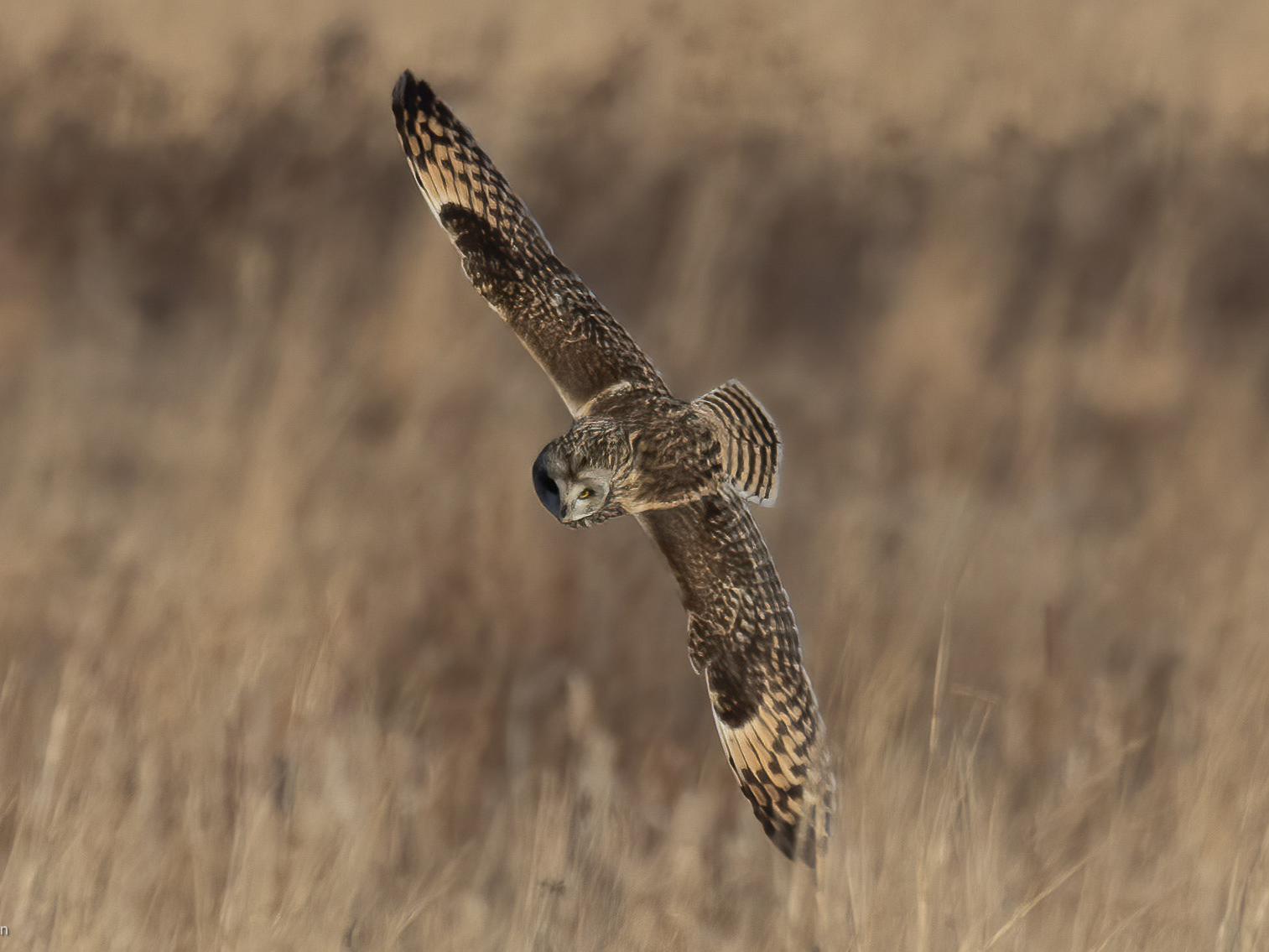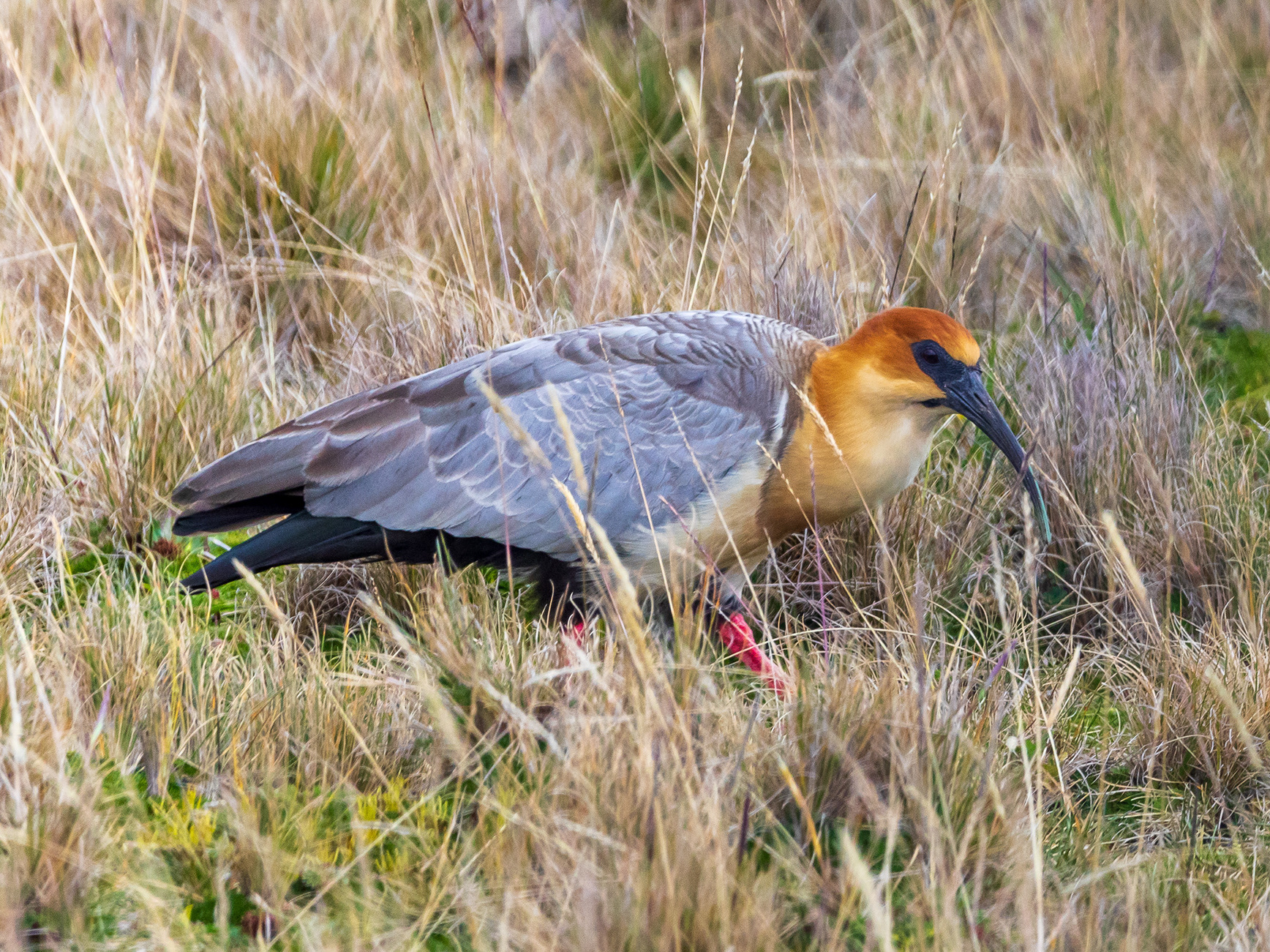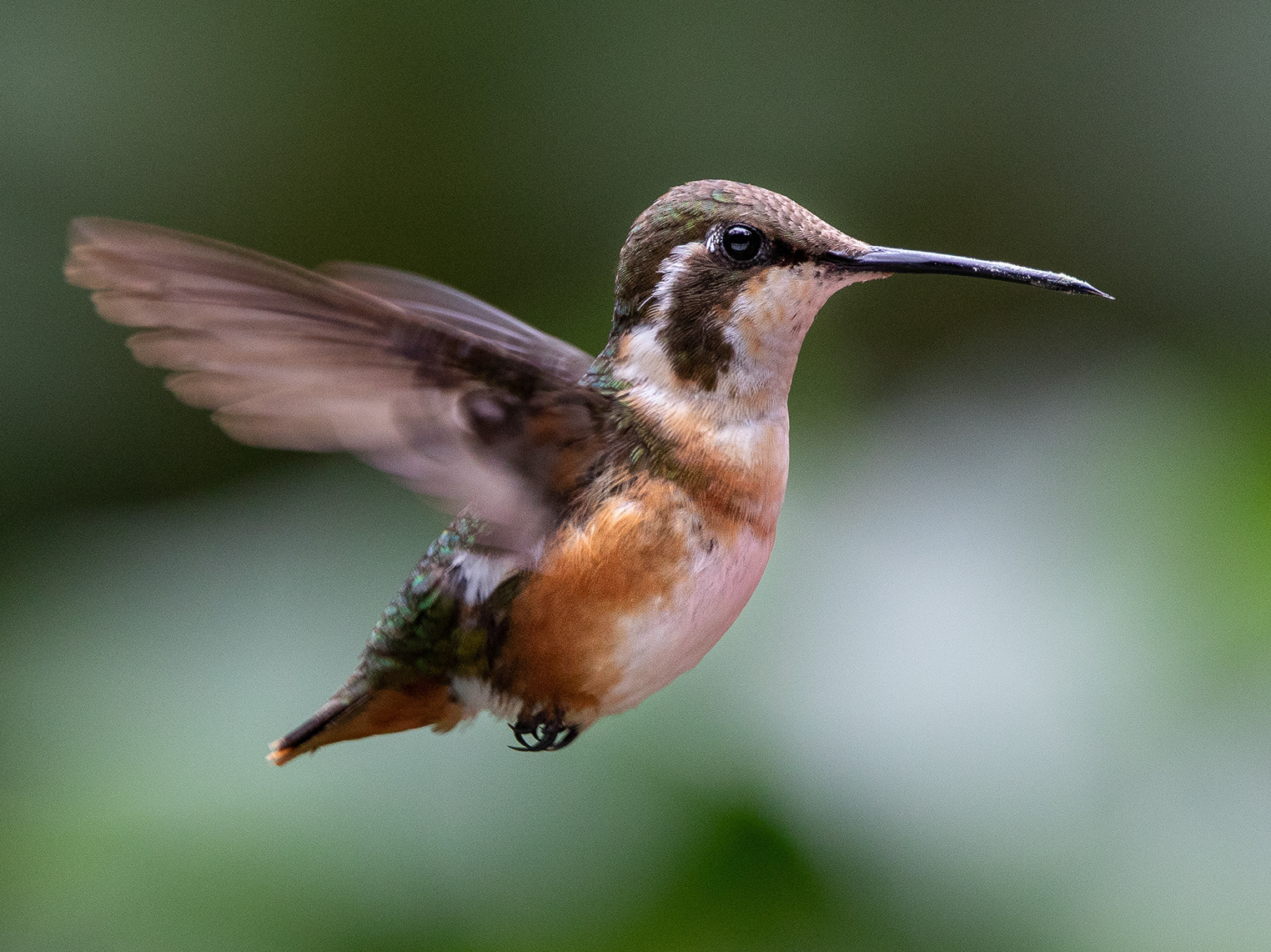One of Doodletown's most beautiful nesting species is the Scarlet Tanager. This bird loves the cover of forested understory so photographs often do not do it justice. By pushing the ISO up to 1000 and speed down to 1/320 I was able to capture good clarity without excessive noise. I found a perch the bird liked where the sun just filtered onto the front of his face and that makes the shot.
Black-billed Cuckoos are a nesting species at Doodletown and can be seen regularly along the trail. Early morning hours are best, listen for them as they are very vocal. This shot was taken with a Canon 5D Mark II with the Canon 500mm and a 1.4 Mark III converter giving me a 700 mm length. The 500 mm lens is so good with light that I could push the speed to 1/1000 with a 250 ISO and 5.6 aperture even in canopy shrouded morning light.
As the Doodletown trail levels out a a man made lake look for all types of nesting species such as Baltimore Oriole, Yellow-throated, Red-eyed and Warbling Vireo, Chipping Sparrow and this American Redstart. This was take with the Canon 7d Mark II using the Mark II 100-400mm lens. The nest was in the shade but the bird was so still that I decided to shot at 1/200 with a 5.6 aperture. That way I could keep the ISO to just 400 and not have to worry about noise factor.
Another common nesting species of the fields just a little further up from the Lake is the Indigo Bunting. The strikingly blue male of the species is often found singing from a perch high in the canopy but, with patience, you will get a shot of a male low enough to fill a frame.These birds do love to go for understory when they come down low so I attached my Canon 500mm to my 7d mark II in order to capture as much light as possible. This image was shot at 1/320 at a 4.0 aperture keeping the ISO down to 250 in order to keep as much detail as possible with a dark background.
The tangled network of scrub shrubs and bushes that line the trail and fill the fields at Doodletown are exactly the habitat many species of warblers desperately seek in the modern day world of highly manicured landscapes and lawns. Part of the reason Doodletown Road has been designated an official Important Bird Area by the National Audubon Society's NY state office is the abundance of these breeding warblers such as this Hooded Warbler appearing in the next several images, as well as Kentucky, Worm Eating and Cerulean Warblers which follow in subsequent images here. Hooded Warblers, like most scrub loving species spend most of their time safely ensconced in brambles and low hanging branches. Come to Doodletown in late April and early May and, if you take the time to study their territories, you will be rewarded by having the males of all of these species come out in the open to sing their song and lay claim to their nesting grounds.
Hooded Warbler shot at 1/1600, 5.6 aperture and an ISO of 320 using the Canon 7d mark II with the Canon 100-400mm mark II lens fully extended to 400mm.
Hooded Warbler shot at 1/4000, 5.6 aperture and an ISO of 320 using the Canon 7d mark II with the Canon 500mm hand held.
Worm Eating Warbler about half way up the trail to the Lake. Shot at 1/400 using 5.6 aperture and an ISO of 160. Camera was the Canon 7d Mark II with the Canon 500 mm lens.
Same bird and camera but from a different angle that shows its striking stripes on the crown of its head.
Kentucky Warbler taken with the Canon 7d Mark II equipped with the Canon 500mm lens. Shooting at 1/160 with an 5.6 aperture and 400 ISO. Used a mono-pod to steady the shot, this bird always uses the same foraging area so it was simply a waiting game to get it to pop up in front of me.
Same bird but as he moved to a darker area I had to bring the speed down to 1/100 and lost a little detail around his face.
Cerulean Warblers are notoriously hard to photograph as they almost always stay in the high branches of the forest canopy. With its winding trails that steadily climb the hillsides, Doodletown is an excellent place to try photographing Ceruleans as there are places along the trails, such as by the first June Cemetary, where you are level with the higher branches of trees trees growing below and there you can get eye level shots of Ceruleans.
Nesting season provides opportunities to see what kind of food sources birds rely upon. During the nesting season it is a high protein diet of insects and other creatures that will help the female have enough protein in her system to generate eggs and then, once the young are born, feed these rapidly growing chicks. Here a adult male American Redstart has just grabbed an insect and is preparing to bring it back to the nest for the female sitting on her eggs. Even though the area was shady, the bird happened to be on a branch that was receiving sun so I could pump up the speed to 1/800 with ISO at 400 and a 5.6 aperture. Shot with the Canon 7d Mark II and the Canon 500mm lens.
Other common nesting species of the area include this Yellow-throated Vireo, a bird you can always count on seeing around the Lake. Out in the open sunlight I could shoot this at 1/800 with an f-stop of 5.6 and an ISO of 400. I used the Canon 7d Mark II with the Canon 100-400mm mark II for this image.
Red-eyed Vireo captured at 1/250 of a second with a 5.6 f-stop and 160 ISO using the Canon 7d mark II and the Canon 500mm lens.
In the fields across from the old Herbert/Weyant Cemetary you should expect to find nesting pairs of Rose-breasted Grosbeaks. This female was more cooperative than her mate who stayed in the higher branches. In January I will photograph these birds on their wintering grounds in Nicaragua.
This female Baltimore Oriole landed right next to me on the lower trail affording a great eye level shot. The clarity of the Canon 500mm lens shows well in this image even when shooting hand held at the low speed of 1/200 of a second at 5.6 f-stop with the Canon 7d mark II. ISO was only 400 which helped.
Doodletown also offers good opportunities for photographing larger birds like raptors and vultures. This Black Vulture was sunning itself just off the trail when I came upon him. Taken with the Canon 7d mark II and the Canon 100-400mm mark II at 1/2500 of a sec; 5.6 aperture and ISO of 320.
Brought the Cannon Mark 5D IV with 500mm and a 2x doubler on a perfectly sunny morning hoping to get images of my nemesis bird of Doodletown, the Cerulean Warbler. As usual the Cerulean was elusive for good photos but American Redstarts were happily setting up nests right over the trails.
Scarlet Tanagers were singing throughout the trail.
These Redstarts were alternating between the male and female sitting the nest, not sure if they already had eggs in it or were just guarding it while collecting food and nesting material.
An "almost gotcha" image of a Cerulean who was out in perfect light but ducked into a leafy portion of the tree at the last minute.
Blue Grey Gnatcatcher nest right over the trail by the upper pond.









